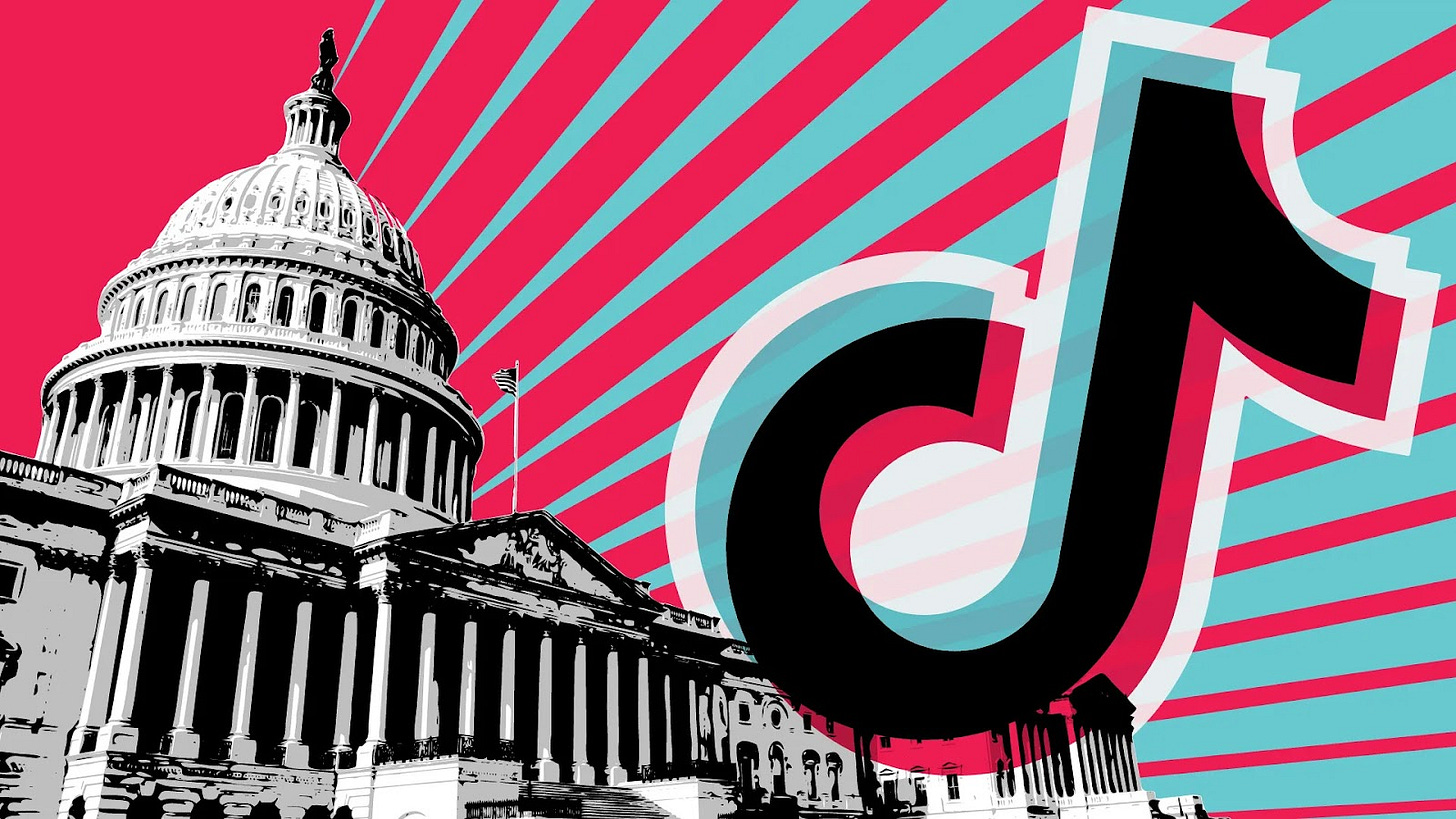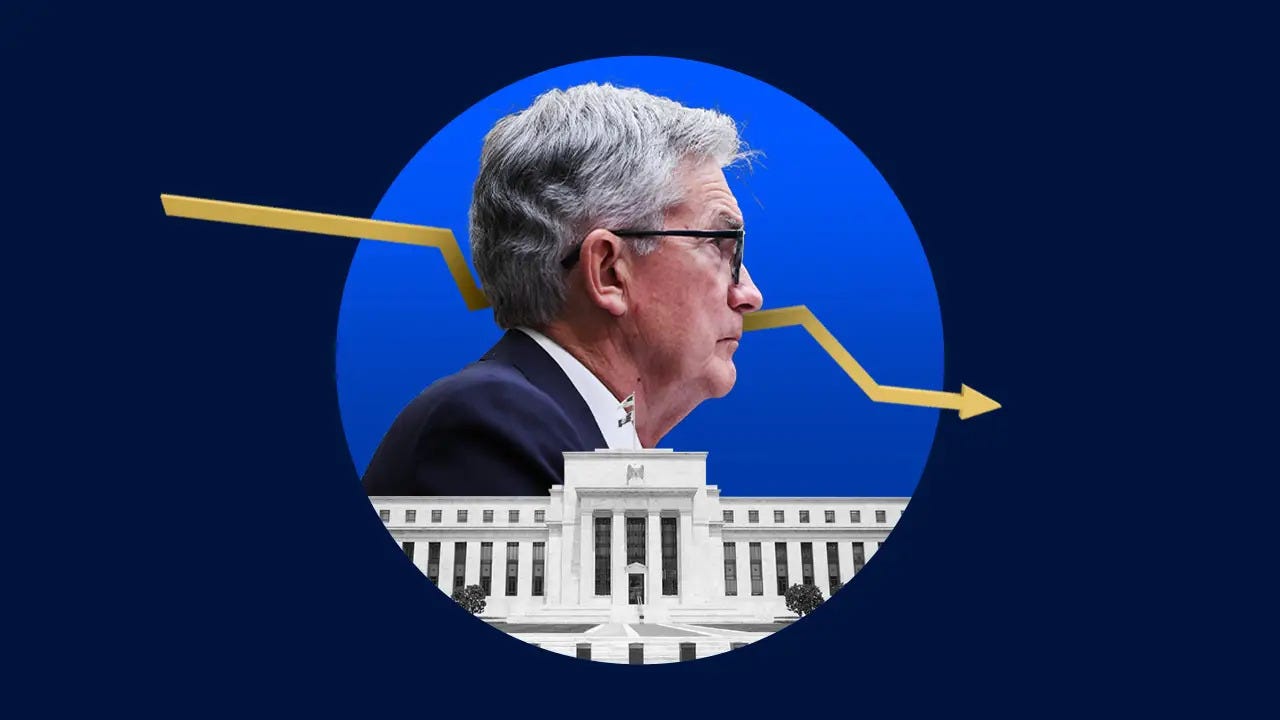Newsletter 8
US Tiktok Ban, Federal Reserve cuts interest rates again, and more!
Dear Reader,
This is the eighth, and final edition of 2024 of The Economic Literacy Initiative Newsletter. As always, you will find summaries of current economic news, and analysis to understand how they are important for your life. After launching in April of this year, we have garnered over 200+ subscribers, and we thank you for all of your support. We hope you have learned a lot about economics, so we wish you a happy new year and happy reading!
US TikTok Ban Upheld by Court of Appeals
Image Source: Link
Summary: Members of the House Select Committee on the Chinese Communist Party (CCP) have sent letters to Apple CEO Tim Cook and Alphabet CEO Sundar Pichai, urging them to prepare for potential legal action if TikTok’s parent company, ByteDance, does not divest TikTok by January 19. A recent court ruling upholds a law requiring ByteDance to sell TikTok by that date, and if it fails to do so, Apple and Google will be obligated to remove the app from their stores in the U.S. The law is aimed at protecting national security, and while TikTok disputes it, the appeals court rejected its claim that the law is unconstitutional. The company warned that a U.S ban could cost small businesses and creators $1.3 billion.
Consumer Analysis: If TikTok is banned in the U.S., consumers would lose access to the app, disrupting entertainment, content creation, and small business promotions. Influencers and businesses could lose $1.3 billion in earnings. And with over 170 million US users the impacts on consumers and business will be huge domestically and internationally. It is still unclear what the app experience will be like after the ban, but the app won’t be removed from your phone if it has been downloaded already. While some argue the ban is for national security, it would push consumers to find new platforms for the content TikTok provides. For consumers, especially creators we will see a huge surge of users on Instagram reels or Youtube shorts. Where creators will flood reels or shorts with old tiktoks, and lead to an oversaturation of both videos and creators.
Source: CNBC
Rise in Household Finance Confidence
Image Source: Link
Summary: Optimism about household finances has reached its highest point since February 2020, with 37.6% of households expecting their financial situation to improve in the next year, according to a New York Fed survey. This increase in confidence followed Donald Trump’s election win and aligns with his promises of lower taxes and deregulation. Despite overall economic growth in 2024, inflation remains a concern, with consumers expecting it to rise slightly over the next five years. However, expectations for government debt growth have fallen to their lowest levels since early 2020, showing a more positive financial outlook.
Consumer Analysis: The rise in household financial optimism suggests increased consumer confidence, which could translate to higher spending and economic activity. However, persistent inflation concerns may temper this spending, as households remain cautious about rising costs. The drop in expected government debt growth could foster greater investor confidence in fiscal sustainability, potentially stabilizing markets. If Trump’s policies of tax cuts and deregulation are implemented, they may stimulate short-term growth, but the long-term impact on debt and economic inequality is still uncertain with some experts believing that those policies might actually have a negative long-term effect. Businesses might also benefit from this optimism through stronger demand, but they must remain vigilant to inflationary pressures affecting costs and pricing strategies.
Source: CNBC
Federal Reserve Cuts Rates by a Quarter-Point
Image Source: Link
Summary: The Federal Reserve lowered interest rates by a quarter percentage point on December 18th, its third consecutive rate cut in 2024, reducing the federal funds rate to a range of 4.25%-4.50%. This move could decrease borrowing costs slightly, but the impact will vary by type of credit:
Credit Cards: Rates may drop, but card issuers respond slowly, so paying down debt aggressively remains key.
Mortgages: Fixed-rate loans, like most mortgages, are influenced by Treasury yields rather than Fed rates, so significant changes aren’t expected.
Auto Loans: High car prices keep monthly payments expensive, with little impact from rate cuts.
Student Loans: Private variable-rate loans might see small reductions, but federal loan borrowers are unaffected.
Savings: Yields on online savings accounts remain strong, offering nearly 5%—a bright spot for savers.
Additionally, the Fed signaled that they expect to reduce rates more slowly in 2025.
Consumer Analysis: The Federal Reserve's rate cut could lower borrowing costs for credit cards and private loans, offering some relief. However, high housing and car prices may limit its impact. Savings accounts remain attractive, but mortgage rates won’t change much. The cut might help with debt but consumers will still need to have spending strategies due to high costs in essential areas.
Demand for Shipping Giant Maersk, Signals a High Demand for 2025
Image Source: Link
Summary: Maersk, a global shipping and logistics company, has reported strong demand in the North American market, indicating continued consumer demand, especially from the U.S. In 2024, North American imports grew by 20%-24% across the first three quarters, and Maersk expects similar growth into Q4. The surge in e-commerce, particularly from Chinese sellers, has also impacted air freight prices. However, Maersk warns of ongoing disruptions in global supply chains, with potential threats such as an East Coast ports strike in January and tariff issues involving China and Mexico. Container prices in North America have risen sharply, partly due to these disruptions. Despite these challenges, Maersk anticipates that global trade demand will remain strong through 2025, and they are adapting by forming a new ocean alliance with Hapag-Lloyd to improve service reliability. The company’s focus on supply chain resilience and sustainability continues as it aims to reduce carbon footprints while meeting customer needs.
Consumer Analysis: Maersk's strong performance in North America reflects ongoing consumer demand, especially in e-commerce, leading to higher shipping costs. However, potential disruptions, like strikes or tariffs, could cause delays and price increases in the short term. In the long run, Maersk's efforts to improve supply chain reliability and reduce emissions may benefit consumers with more consistent services and lower costs, though some disruptions are expected to continue.
Source: CNBC
Rising Restaurant Wages but Reduced Tips
Image Source: Link
Summary: Restaurant workers are earning more from base wages than tips, with wages rising 66% from January 2020 to September 2024, compared to just a 23% increase in gratuities. Tips now make up 57% of a median worker's income, down from nearly 65% in 2020. This shift comes as workers gained negotiation power during the pandemic, leading to higher base pay. While tips have remained relatively flat, consumers are tipping less, especially in response to automated prompts. However, rising base wages have helped workers maintain income despite slower tip growth, with wage hikes in many states further improving their financial situation.
Consumer Analysis: The average consumer is pulling back on tipping. Many are wary of automated tip requests and feel that gratuities are being asked for in situations where they may not be warranted. Despite the rise in wages for restaurant workers, consumers are reducing their tip frequency, with a Wells Fargo survey showing only half of Americans plan to give holiday tips this year. This reluctance to tip more is happening even though inflation has slowed down, and many restaurants are easing up on price hikes. The shift in tipping behavior might be linked to frustration over "tipflation" and a growing sense that higher wages are already compensating workers fairly, leading consumers to reconsider their tipping habits. An important factor to consider when dealing with the pressure of tipping is if it is affordable.
Source: NBC
Key Terms
Court of Appeals - review challenges to court decisions to determine whether the proceedings were fair and the law was applied correctly.
Interest Rates - the amount a lender charges a borrower and is a percentage of the principal—the amount loaned.
Tipflation - the increased rates that people are now expected to tip at restaurants and for other goods and services.
Sources: Investopedia, US Courts
Thank you for reading our final newsletter of this year! We hope our organization has helped you learn more about economics, and the functions of the world, and improved your economic literacy. Thank you for supporting us this year, and stay tuned for more exciting things coming in the new year.
Sincerely,
The ELI Team






